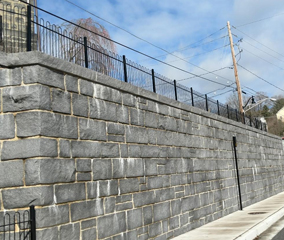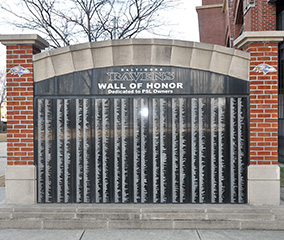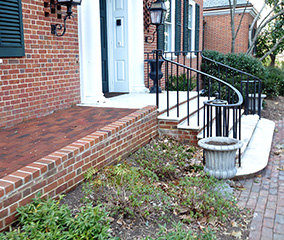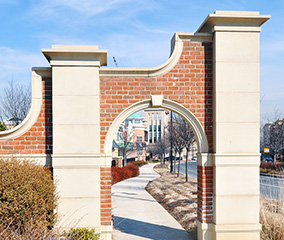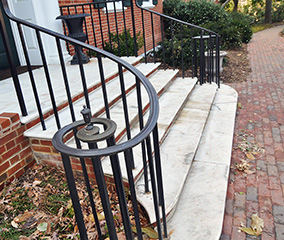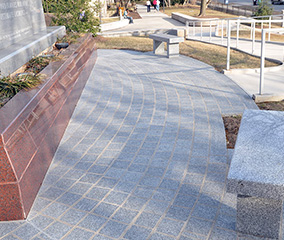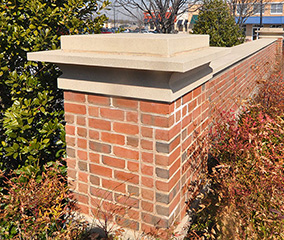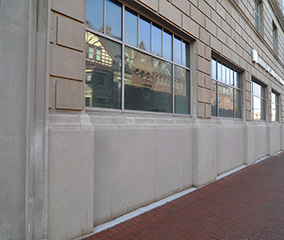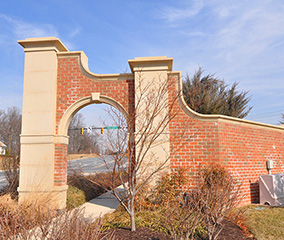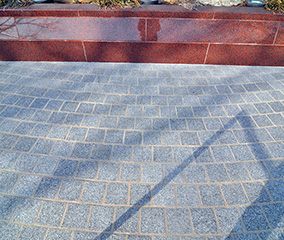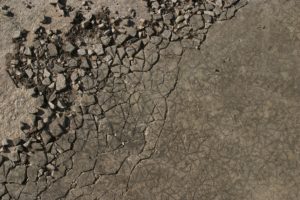
Call Del Prete Masonry immediately to determine whether we should replace or repair the concrete.
Cracks in your concrete come in various shapes and sizes. It’s common for foundation cracks to develop within the first year of new construction. Mostly near windows, the corners of the floors or walls, or in the longer sections of your concrete. If cracks become larger or allow water to enter, call Del Prete Masonry immediately to determine whether we should replace or repair the concrete.
What are the Types of Cracks?
We can pinpoint the cause of concrete cracks by simply viewing the exposed damage. The type of crack will help us determine the best solution, either to replace or repair your concrete. Some prevalent types of cracks include:
· Shrinkage cracks or check cracks: These cracks are obvious to spot and identify. They usually only affect the top layer of your concrete. A shrinkage crack is entirely normal and frequently happens during the initial hydration process when concrete always shrinks a little.
· Settlement cracks or structural cracks: They are large, from one side to the other side of your concrete. Soil shifting and grade preparation can both contribute to forming structural cracks in your concrete. You can use an epoxy to fill in these cracks to prevent further shifting.
· Twisted cracks or off-set structural cracks: These types of cracks can be spotted if the concrete is lifted on either side of the crack. They also shift in and out of place. Most often, a professional masonry contractor will have to either replace this type of concrete crack.
How Do I Fix the Minor Cracks?
A crack in your concrete foundation can be an apparent eye sore and small cracks can become bigger when they are not treated right away. Follow these steps to fix a crack in your concrete:
- The impacted area must be adequately prepped and cleaned for treatment.
- Use a chisel to break away the rough edges along the crack so that the crack is entirely smooth.
- Once again, polish the affected area and brush away any debris. Use compressed air to loosen any debris trapped between the crack.
- We suggest you use a sealer or filler to cover up the smaller cracks, depending on the ideal choice for your particular concrete. In addition, you will need a mixture of grout or concrete to fill in the bigger cracks.
- Utilize a trowel to make sure your surface is level, and no extra cracks are left behind.
- After properly drying it, use a re-surfacer to smooth the concrete and make it look new.
At Del Prete Masonry, we are experts in masonry restoration. Call us at 410-683-0650, so we can replace or repair your concrete!
CONTACT DEL PRETE MASONRY TODAY!
Whether you are ready to start your next masonry project or are still hesitant and have questions, Del Prete Masonry is here to help. We have the experience and expertise to get it right the first time. Questions? Want to visit some of our residential or commercial projects? Ready to set up a consultation? Feel free to give us a call at 410-683-0650 or visit us online. We are happy to serve Baltimore City and County, Harford County, Carroll County, Anne Arundel County, and Howard County. To see examples of our work and to keep up with our new and exciting projects, be sure to follow us on Facebook, Twitter, and Pinterest
Tags: Baltimore masonry, causes of crack formation in concrete, concrete masonry









